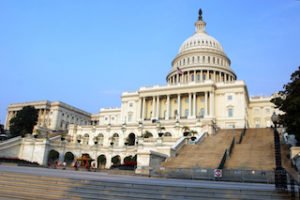The first of what could be three or possibly more sets of “Frequently Asked Questions” regarding implementation of the Fiduciary Rule have been posted by the Department of Labor.
Phyllis Borzi, assistant secretary of Labor for DOL’s Employee Benefits Security Administration, said earlier this week the EBSA anticipates releasing the FAQs in “three waves,” but there could be more.
The DOL posted a blog written by Borzi on Thursday, which appears below. And the first wave of FAQs can be found here.
Your Conflicts of Interest Questions Answered
Earlier this year, we announced new protections to ensure that Americans who are saving for retirement will have access to financial advice in their best interest.
But smart regulation is only as effective as its implementation. The staff of the Employee Benefits Security Administration worked for nearly six years to publish a final rule to reduce conflicts of interest in retirement investment advice, and now they will spend untold hours making sure the rule protects retirement savers as intended.
One of the first and most important efforts on this front is the publication of FAQs based on the input we’ve received from the financial services industry and others. These questions are an important part of the regulatory process as they allow the department to clarify important parts of the rule, and head off misunderstandings that could lead to bad results for retirement savers, or financial services professionals.
Gathering these questions from multiple sources and making the answers public is another example of our sincere efforts to work with the financial services industry to craft a rule that makes sense and works in the real world of investment advice.
Throughout this yearslong project we have, at the direction of Secretary Perez, set as big a table as possible in order to get the best ideas from the worlds of financial services and consumer advocacy. I believe we have succeeded in this effort, and our continued engagement with industry will only make the rules work better.
The FAQs published today are the first of several that will be published in the coming months. They address questions like:
How will the Labor Department approach implementation of the new rule and exemptions during the period when financial institutions and advisers are coming into compliance?
The full Best Interest Contract Exemption provides that financial institutions cannot “use or rely upon quotas, appraisals, performance or personnel actions, bonuses, contests, special awards, differential compensation or other actions or incentives that are intended or would reasonably be expected to cause Advisers to make recommendations that are not in the Best Interest of the Retirement Investor.” Does this provision categorically preclude financial institutions from paying higher commission rates to advisers based on volume (that is, by using an escalating grid under which the percentage commission paid to the adviser increases at certain thresholds)?
When do firms and their advisers have to comply with the conditions of the new Best Interest Contract Exemption and Principal Transactions Exemption?
Our initial focus has been, and remains, broad compliance with the rule. If you have questions about it, come and talk to us. It’s always better to get an answer straight from the source than to drive ahead with processes or practices that may run afoul of the law.
I am proud of the amount of time and effort my agency has put into talking with stakeholders. And I am thankful for the many thoughtful commenters from the financial services industry who have engaged with us in creating this consumer protection rule.
As my time with the department draws to a close, I can think of no better legacies than this rule and the culture of collaboration the agency and industry have created around it. Every part of this dialogue – including feedback from those who disagreed with the approach or details of our rule – has been valuable, and we truly appreciate the ongoing dialogue. This process has enabled us to finalize a better, more effective and more workable rule. For that we are deeply grateful to all of our stakeholders.
• Thoughts or comments? Please visit this thread: The DOL Responds to 34 Questions












